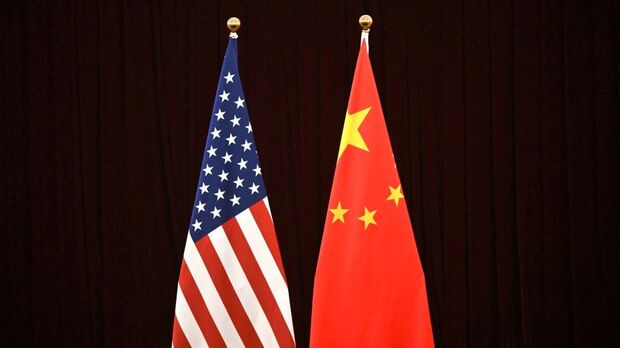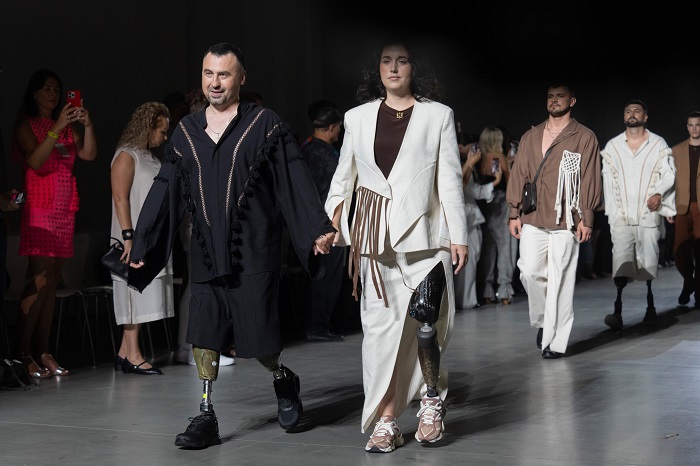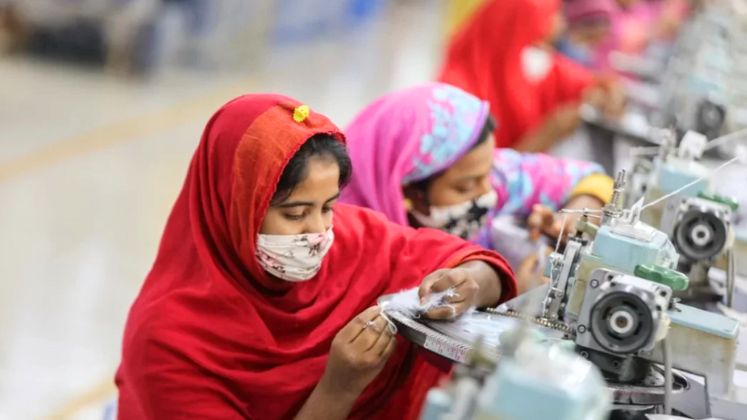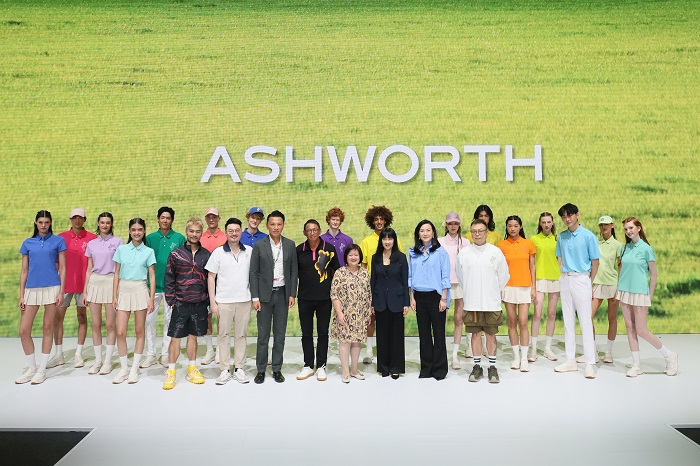FW
Bangladesh’s exports of jute and jute goods decreased dramatically in the current fiscal 2013-14 due to a depreciation of Indian rupee and sluggish demand in the world market. Export earnings have declined by more than 30 per cent.
India which used to buy about 60 per cent of the total raw jute from Bangladesh cut the level of its imports in the last few months. Iran has also slashed buying jute due to economic sanctions imposed by the western countries. In addition, the prevailing sour relations with Pakistan and the instability in Syria and Egypt, which are traditionally jute and jute goods importers, caused a decline in exports.
China, Vietnam and European countries - the other regular importers of local jute and jute goods- have opted for reduced imports. Besides political unrest in Bangladesh has also created shipment problems in exporting the finished jute goods, causing heavy financial losses to the jute sector.
Millers and exporters have urged the government to explore new markets for jute exports immediately. Jute producers, processors and exporters also want the government to increase local consumption of jute by implementing the Jute Packaging Act. Bangladesh enacted the Jute Packaging Act in 2010, but the law is yet to be implemented.
India's textile and garment exports will rise 17.6 per cent in the current fiscal from a year before but will still miss the target of $43 billion despite the depreciation in the rupee. Textile and garment exports hit $20.43 billion in April-December, up 13.4 per cent from a year ago period. Exports are expected to touch $40 billion in 2013-14 from $34 billion a year ago, mainly on higher shipments of garments, cotton yarn, fabrics and manmade fiber.
While rupee depreciation helped, the rise in demand in the US despite a slow or fragile recovery resulted in a surge in exports. Moreover, demand from new markets also helped. Having slid by nearly 6 per cent in the last fiscal and seeing a drop in 10 months of 2012-13, garment exports started picking up since March as the domestic currency continued to fall. Soaring costs in China and problems in compliance of global safety norms at Bangladeshi mills helped India's export grow.
The rupee depreciated 11.6 per cent between April and December this fiscal compared to year ago, to an average of 60.79, making shipments remunerative.
Turkish textile industry is preparing to meet industry professionals at the Tuyap Clothing Machinery Fair from April 24-27, 2014. Clothing Machinery 2014, 24th International Clothing Machines, Embroidery Machines, Clothing Related Industry and Accessories Fair, member of International Apparel Federation (IAF) are world’s largest gathering of clothing machinery industry. They will allow textile investors and purchasing executives to meet and serve the country’s exportation objectives.
While many companies will unveil their new machinery range, domestic producers and international companies will participate in the fair to introduce their technologies to the industry. In addition to the exclusive division for fabrics this year, the fair will feature following product groups; technologies covering all stages of clothing production; clothing sewing machines, print layout machinery, laser cutting machinery, cleaning machinery, metrics measurement machinery, sewing and embroidery threads, and tagging and pattern printing systems.
In 2012, the fair hosted more than 40,000 visitors from 66 countries and 416 companies and company representatives. This year they are aiming to attract more participants.
www.tuyap.com.tr
Karl Mayer, the German technology major that enjoys considerable demand in India for its warp machine, has its service subsidiary in Mumbai since 2009 with service operations being expanded on a regular basis. The company sees India as an important sales region for the warp preparation machines produced at Obertshausen. Demand for them is on the rise since 2010.
With increasing demand, Karl Mayer considers India, an important growth market for the textile machinery. Hence, it’s planning to set up its own production centre in India. Preliminary work on the project is already in development stages. The company has acquired majority ownership of LIBA Maschinenfabrik GmbH. Integration of the two worldwide leading companies in areas of development, manufacturing and delivery of warp knitting and technical textile machinery has been implemented according to plan. As a member of the Karl Mayer Group, now LIBAMaschinenfabrik will be incorporated under the name Karl Mayer LIBATextilmaschinenfabrik GmbH.
At present work is in full swing on ‘Best of Both Worlds’ projects, on completion of these, integration of LIBA into the Karl Mayer business unit structure will commence. This would be finalized by the end of 2015.
www.karlmayer.com
Italy-based Itema, a leading provider of advanced weaving machines has sponsored Milano Unica once again. Milano Unica is the exclusive textile fair held in Milan and Shanghai, which brings together the best manufacturers of premium Made in Italy fabrics and apparel.
This year the Itema’s link with Milano Unica is stronger than ever since Milano Unica’s president is Silvio Albini. Albini heads the Albini Group, one of the oldest and most loyal customers of Itema. The Albini Group is a top European manufacturer of high-quality exclusive shirting fabrics and a flagship of Made in Italy excellence. The Group has eight plants (five in Italy), with a total of more than 1,300 employees worldwide.
On March 6, 2014, Itema opened its new company premises in Shanghai. Itema unveiled its latest advancements in weaving technology to allow its customers to produce high quality fabrics and achieve maximum success. Itema has been present in China since 2003 with sales and after-sales teams, assembly and technical support to ensure the highest possible standard of weaving solutions, with complete offering and service to its customers in the Chinese market.
www.itemagroup.com/
The 5th Textech International Expo on Textile and Apparel Technology, Machinery and Related Services is being held in Sri Lanka, March 6 to 8, 2014. The participation list has over 130 overseas companies , of which 80 are from China. Textech is a business to business platform for the industry of South and Southeast Asian nations: India, Vietnam, Indonesia, Pakistan, Bangladesh, Sri Lanka, Malaysia, Thailand, Philippines, Cambodia and Singapore.
The exhibition focuses on textile and garment sector of Sri Lanka. The underlying objectives is to further expand the booming textile and garment sector by bringing together reputed international manufacturers and suppliers to Sri Lanka and create the much-needed business links among prospective buyers and sellers. Textech Sri Lanka 2014 aims to be a redefined gateway to the entire industrial sector of South and South-East Asia. This area is set to become the largest manufacturing base of the world. Apparel exports of Sri Lanka surpass five billion dollars and account for over 70 per cent of the export earnings of the country.
Two other events are running concurrently, the Dye+ Chem Sri Lanka 2014 International Expo and the Colombo International Yarn and Fabric Show 2014.
www.textechonline.org/textechsri/
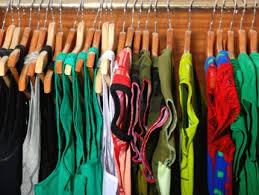 A recent report by Companies and Markets Research says, despite the current global economic downturn, the global apparel industry continues to grow at a healthy rate. This coupled with the absence of switching costs for consumers and great product differentiation, means that rivalry within the industry is no more than moderate. The apparel industry is of great importance to the economy in terms of trade, employment, investment and revenue all over the world. The industry has short product life cycles, vast product differentiation and is characterised by great pace of demand change coupled with long and inflexible supply processes.
A recent report by Companies and Markets Research says, despite the current global economic downturn, the global apparel industry continues to grow at a healthy rate. This coupled with the absence of switching costs for consumers and great product differentiation, means that rivalry within the industry is no more than moderate. The apparel industry is of great importance to the economy in terms of trade, employment, investment and revenue all over the world. The industry has short product life cycles, vast product differentiation and is characterised by great pace of demand change coupled with long and inflexible supply processes.
As per the report, the global apparel industry -- encompassing clothing, textiles, footwear and luxury goods – touched approximately $2,560 trillion in 2010. The apparel, luxury goods and accessories portion of the market, which accounts for over 55 per cent of the overall market, is expected to generate $3,180 billion in 2015, with a yearly growth rate of more than 4 per cent.
The emerging markets
Apparel remains largely a discretionary purchase compared to other consumer goods, making it more prone to economic shocks. The market has shown significant recovery from the 2008-09 slow down, with robust growth in emerging markets. The global apparel market has been shaped by three contrasting regional movements: robust growth in emerging markets, fragile recovery in the US, and a sharp slowdown in Western Europe.
Despite a relatively low percentage of its total population using the internet, Asia-Pacific boasts of some of the most tech-savvy consumers. The e-commerce explosion has been particularly pronounced in China, where the channel's share more than doubled from 3 per cent in 2011 to 7 per cent in 2012. Although the convenience factor is the primary driver of internet sales, the prevalence of discounts online has added to its appeal. The main challenges to growth in emerging markets are: the prevalence of cash culture, and caution over sharing credit card details online. With the online channel stealing market share, apparel specialist retailers and department stores have been investing heavily in creating compelling in-store environments and services to rebuild their appeal.
Market segments
The global children’s wear market is expected to go beyond $186 billion in 2014, marking a 15 per cent increase in five years. The Americas hold under 40 per cent of the global market. The global men’s wear industry is expected to exceed $402 billion in 2014, representing over 14 per cent expansion in five years. The leading market sub segment is clothing and footwear, with over 58 per cent of the market. The Americas have a 35 per cent stake in the overall market.
Global women’s wear industry is expected to exceed $621 billion in 2014, growth of over 12 per year on year. The leading market sub segment is clothing retailers, with over 64 per cent of total market value. The EU has a more than 37 per cent stake in the world market, which is fragmented and highly competitive.
The report states that entry to the apparel retail industry does not require large capital outlay. Setting up a single, independent apparel retail store is within the means of many individuals, even in countries like India and China, where median incomes are low. However, in some countries a few large corporations account for a major share of total industry’s revenue. Their scale economies include the ability to build brands in multiple retail outlets, and greater buying power when negotiating with suppliers. The global apparel industry is fragmented but there is room for large numbers of smaller players in this industry.
www.companiesandmarkets.com
 Vietnam's textile industry is aiming to achieve export revenue of $22-23 billion in 2014 banking on the positive global economic recovery, rising demand for clothes and continuous efforts to increase production capacity.
Vietnam's textile industry is aiming to achieve export revenue of $22-23 billion in 2014 banking on the positive global economic recovery, rising demand for clothes and continuous efforts to increase production capacity.
Vietnam’s garment and textile industry in the first two months of this year gained a year-on-year increase of 30.1 per cent in export value to reach $3.2 billion. The industry had a surge of 44.9 per cent in export value in February to reach $1.3 billion. The country’s textile and garment industry firms have started large projects to expand their production and receive new business opportunities this year.
In 2013, Vietnam's textile and garment industry gained $20 billion in export value. A year-on-year increase of 18.6 per cent to reach $17.9 billion for textile and garment exports and a 15.7 per cent surge to reach $2.1 billion for fiber products. The industry boasted of a trade surplus of $5.12 billion dollars last year, with imports of raw materials estimated at $14.88 billion.
So far, many enterprises have signed export contracts to be completed by the third quarter of this year. Many Vietnamese companies have invested several times in developing their production capacity to become an original design manufacturer. An original design manufacturer (ODM) is a company which designs and manufactures a product which is specified and eventually branded by another firm for sale. Now many foreign customers want partners which can provide ODM services to help them save money and time.
Garco10, a leading garment manufacturing factory, expects to achieve export revenues worth $90 million, 11 per cent more than it managed to earn in 2013. Apart from maintaining exports to traditional markets such as the United States, the EU and Japan, Garco10 is also looking to explore exports to future Trans-Pacific Partnership member states.
New investments to boost production
Vietnamese manufacturers are putting in money to increase production capacity this is being done to cater to existing demand and to reach out to newer destinations. The Garco10 company, for example has invested in two new shirt production lines at the Trieu Do Company in Thanh Hoa province, 10 shirt production lines at Ha Quang Factory in Quang Binh province and a premium vest production line at Hung Ha Factory in Thai Binh province. Garco10 is also introducing specialised software to remove redundant operations and increase productivity.
The Dong Nai Garment Corporation, which has already received a good number of large orders till last September, has put into operation seven production lines in Dong Xoai town, Binh Phuoc province. Another 15 production lines at Dong Xuan Loc Company is expected to become operational this June. This year, the company aims for export revenues of $47 million, 10 per cent higher than in 2013.
The Duc Giang Garment Corporation’s export revenue in January was estimated at $7.5 million, up by 15 per cent compared to January 2013. The corporation has received orders for delivery until the second quarter of the year, and is building a factory in Hoa Binh province to increase its production capacity. It has set a target of $89 million in export for 2014, up by 20 per cent since last year.
Rising opportunities
According to industry estimates, most of the companies have orders to fulfil until the end of the first and second quarter of this year. Experts are positive that with economies of large markets such as the US, EU, Japan and the Republic of Korea (Rok) showing signs of recovery, textile export revenues of Vietnam would gain importance.
The forecast is that Vietnam's annual textile export revenues to the US will rise to $10 billion dollars by the end of 2014, up 17 per cent compared to that of 2013. And once the Trans-Pacific Partnership (TPP) is signed, the country will further gain advantage to export to the US, as the textile import tariff will come down to zero per cent. The exports of Vietnam's textiles to the EU will also see a strong increase when the Vietnam–EU Free Trade Agreement is signed.
Japan is another potential market for Vietnam’s textile. Exports to the country are estimated to reach $3 billion in 2014, an increase of 20-25 per cent against 2013. Also, the market share of Vietnam textiles in RoK has increased since the ASEAN–RoK Free Trade Agreement took effect in 2007. The export of textiles from Vietnam to Rok in 2013 witnessed a rise of nearly 54 per cent compared to 2012.
Despite many hurdles that includes strict commercial barriers, particularly in the US, such as strict requirements for social responsibility, eco-labels etc; orders shifting from Vietnam to Bangladesh, Laos and Cambodia Vietnam’s garment sector has set a target to increase the proportion of FOB model production from 38 to 50 per cent, and ODM model production from 5 to 10 per cent in 2015. The textile industry is expected to achieve a localisation rate of 60 per cent by 2015 and 70 per cent by 2020.
Garco10.vn
Knitted fabrics of various weights and compositions in all fashion sectors stole the show at Premiere Vision, Paris held from February 18 to 20. It is a trend reflecting the importance placed on knitted fashion. Fashion brands are developing comprehensive and coordinated collections in knitwear. Colors like spring yellow, pink and green found their way into fabrics as diverse as linings to techno knits, fine jerseys and eco qualities. Fashion colors were made brighter on white or ecru backgrounds. Darker navies came in for black, as well as the traditional nautical colors associated with summer.
Cotton and linen were the most prevalent fibers, sometimes with small amounts of animal hair, a little mohair, alpaca or cashmere added for softness or visuals. Linen is now used extensively for knits, either in a fine gauge lingerie and underwear look in pale pastels and white, or in more chunky weighty versions with a chainmail effect.
Open stitchwork and airy constructions were echoed with cut outs and fancy stitches to create irregular patterns and the element of surprise. Net and gauzy open knits, transparent yarns and fabrics, brushed cotton with a velvet touch, fine gauge wool and cashmere, delicate cotton and linen for open stitched designs combined to make knitted fabrics a talking point.
www.premierevision.com/en
The 53rd Dornbirn Manmade Fiber Congress will take place in Austria from September 10 to 12, 2014. This is an international platform for manmade fibers. It has participants from the whole textile processing chain. Representatives from the manmade fiber industry, the processing chain and the academic research field use this communication platform for intensive exchange of ideas.
Among the topics are fiber/filament innovations (oil and bio based fiber raw materials, carbon fibers, functionalities, waste management), nonwovens/filtration, automotive (transportation—train/ship/air) and key technologies (finishing, coating, spinning, extrusion).
It will feature around 100 lectures by experts. The show will also present the enlarged key technologies section, which will discuss the latest findings in the field of finishing, coating, machinery for spinning/extrusion and joint developments between academic research and industry. Along with innovation, cost efficiency and competitiveness have become decisive factors for the success of European fiber industry.
There will be speeches on nonwovens and on standardisation of antimicrobial testing methods. Invista will present findings of market research on consumer trends in textiles. Radici Partecipazione will speak about sustainability as a source for market opportunities meeting the challenges of integrated production.
www.dornbirn-mfc.com/en/tagung/tagung.asp



